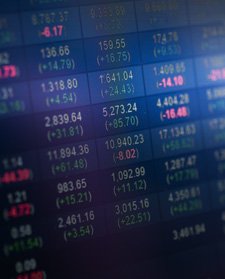Nifty Futures in Derivatives Market – AxisDirect
AxisDirect-O-Nomics
Dec 29, 2017 | Source: Moneycontrol

Nifty Futures in Derivatives Trading
F&O trading differentiates itself from stock investment along these lines.
# Investment required for an F&O trader is lesser than that required for the same stock in the cash segment, as only a margin amount is required for the F&O segment.
# Lower margin attracts more money, which means more money is at stake. Hence, the risk is on the higher side, especially as F&O have a predefined expiry date.
# Higher risk perception, in turn, means higher volatility.
Such interplay of risk, volatility, and short trading horizon shows itself in the market in peculiar ways.
# Premium/Discount or Contango/Backwardation:
# Implied volatility (IV)
Contango is a situation in which the cash price is at a discount to the future price. This concept is usually relevant for commodities, where the cost of the commodity at a future date is priced higher because of costs like warehousing, insurance etc. making its future trade at a premium to the commodity’s spot.
In the equity market, we can relate it to by observing that the incidence of opportunity cost makes the equity future trade at a premium. However, in commodities too, there are exceptions, when contango is reversed (backwardation) in the case of short shelf life or other reasons.
In other words, a commodity goes into backwardation and the commodity will be in higher priced than its future if the traders are more interested in acquiring it now rather than later.
So, when equity markets turn into backwardation, it could also be because, traders perceive that the price gain is to happen now, rather than later.
This explains the trend lately seen in stocks listed in the F&O segment in NSE, where in 15% of the futures are already in backwardation, while for the rest of the futures, a majority are trading at a premium near 0.5, with only a very few near 1.
For instance Nifty’s premium which was earlier in the range of 20-30 has now narrowed to 5-10, while Banknifty has shifted from a premium of 50-100 to a discount of 85-100 pointing at backwardation.
This suggests that generally, investors perceive that an uptrend is strong and that it is happening now.
The second trend that is visible from F&O segment is the implied volatility, especially of the key indices, Nifty and Bank Nifty. Usually, implied volatility, or IV declines when the expectation is bullish, and vice versa.
IV of ATM (at the money options) plotted for the last 10 years show that IV for both Nifty as well as Bank Nifty has slipped below historic lows.
This suggests that investors are much more positive, certain, and comfortable about upside expectations than they were during the previous major rallies, be it in 2004-2007 or 2014-2015.
So, both the backwardation as well as IV is pointing towards stronger investor confidence in continuation of the uptrend.
So, who stands to lose?
Now that the investors can stay assured, a trending market may mean that the options traders and jobbers or those traders who have been riding on volatility taking both sides of the swings, may now be at a disadvantage.
Related Keyword
Trading
Derivatives
nifty
AxisDirect-O-Nomics
banknifty





 INDIA
INDIA NRI
NRI










